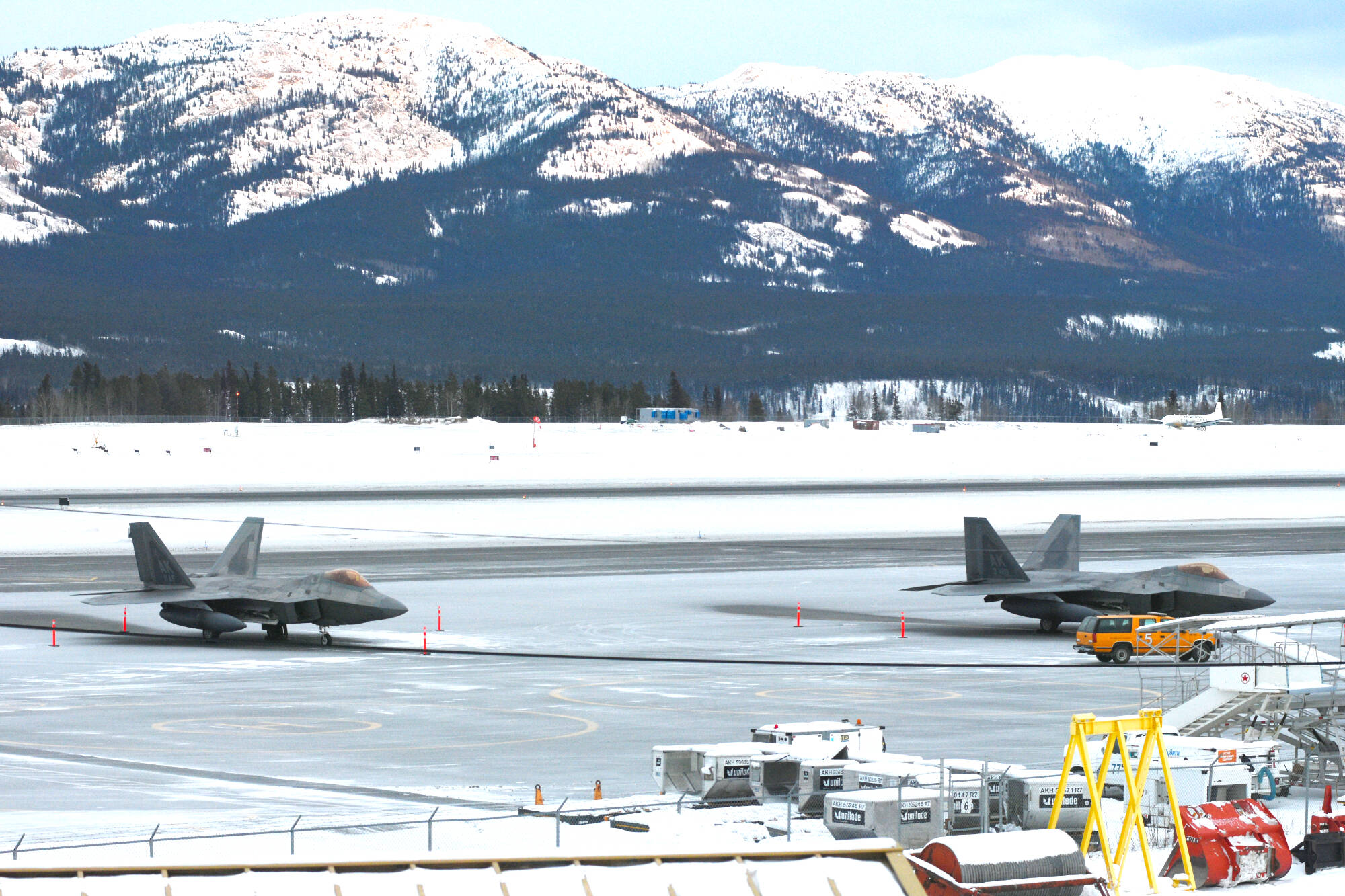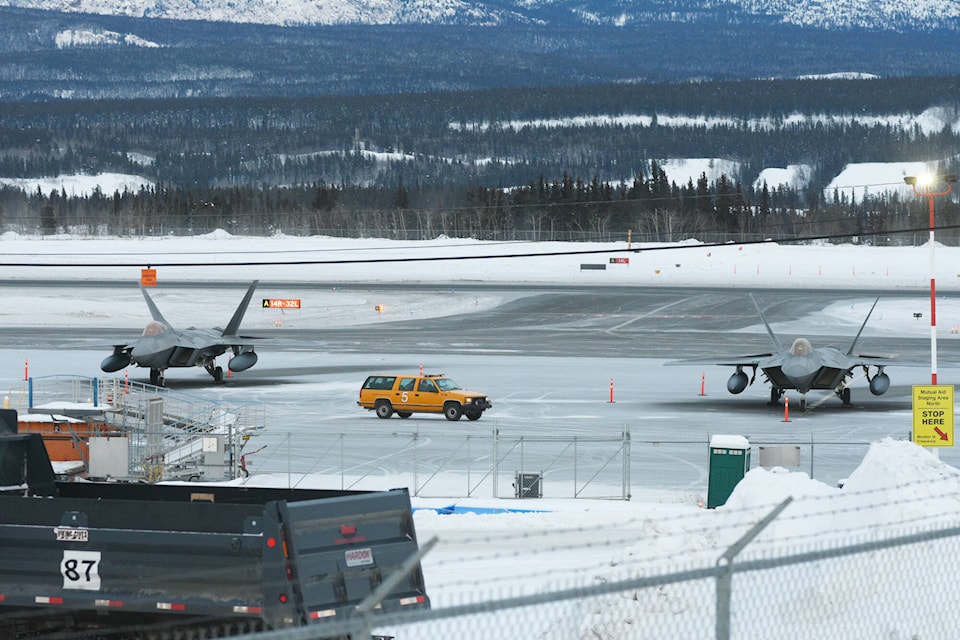Whitehorse’s aviation watchers were treated to a rare sight as two F-22 Raptors, top-of-the-line fighter jets operated by the United States Airforce, came in for a landing at the local airport.
Airport and emergency services officials say that the planes descended into Whitehorse at around 3 p.m. on Dec. 13 after declaring an airborne emergency, but few other details about their origin or destination are available.
F-22s have been in service with the United States Air Force since 2005. The single-seat jets are designed to thwart detection by radar and can achieve speeds of up to 2,414 km/hr, more than twice the speed of sound.
Both planes were still parked on the apron at Eric Nielsen International Airport as of sundown on Dec. 14. Visible from the nearby Alaska Highway and walking trails, the jets have attracted attention from passersby and those who make work or a hobby of observing the comings and goings at the airport.
“I was a plane nut growing up so seeing F-22s in Whitehorse in pretty exciting,” said Paul Scholz, one of several Yukoners who stopped to snap a photo of the planes.
Scholz works near the airport and said that he thinks he heard the F-22s landing. Others commenting on posted photos of the planes said the engines shook their homes.
Simon Blakesley also heard the jets coming in and with a trained ear recognized that the sounds echoing around the valley could not be coming from the engines of anything in the Air North or Air Canada fleets. Blakesley has a keen interest in unusual arrivals at the Whitehorse airport as he works as a photographer for Air North and with the Royal Canadian Air Force’s (RCAF) associate historian program. Thinking all the racket was likely caused by RCAF CF-18 hornets making a landing, he went up to the airport.

It was immediately clear that these were not the Canadian jet fighters Blakesley had been expecting, noting the Raptors’ different tail shape. He said he couldn’t identify them immediately as this was the first time he has seen F-22s in person and he believes it is the first time they have landed in Whitehorse.
Blakesley said he waited around to take some night photos of the planes lit up by the runway lights. He said he saw Air North crews refuelling another United States Air Force plane that he assumes ferried a maintenance crew to Whitehorse.
Blakesley, a former RCAF mechanic himself, said the ground crews working on the Raptors will be hoping to finish their work before the cold snap set to hit Whitehorse this weekend arrives. Speaking from experience he said making major repairs to an aircraft outdoors in the winter is “not fun.”
While the Raptors are definitely a rarity they are far from the only military aircraft Blakesley has seen touch down in Whitehorse. He has seen cargo aircraft, the C-130 Hercules and the enormous C-17 Globemaster, as well as RCAF fighters and training aircraft. He added that the Whitehorse airport is sometimes used as a stopover for anti-submarine aircraft based on Vancouver Island that go on to patrol north of the Arctic Circle.
Blakesley described feeling “like he was in a science fiction movie” this summer when five United States Marine Corps V-22 Ospreys stopped in Whitehorse travelling between Alaska and California. The Osprey is unique because its twin tilting rotors allow it to take off and land vertically like a helicopter but then fly with propellors facing forward at speeds traditional helicopters cannot match. Blakesley said the scale of the distinctively-shaped aircraft wasn’t obvious as he saw them come in to land and they looked more like remote controlled drones until they were quite close.
These stopovers and emergency landings in Whitehorse are all a result of the city’s “strategic location” in the midst of the boreal wilderness, Blakesley says. Dozens of planes, both military and civilian, fly over the Yukon each day and Whitehorse sits on the routes connecting Alaska to airports in the lower 48 states and on a corridor used by planes crossing the Pacific Ocean. Blakesley noted a large cargo plane that touched down in Whitehorse due to poor weather over Alaska after it had crossed the Pacific from Seoul, South Korea and also at least one incident where a southbound commercial jet out of Alaska had to stop due to a medical emergency onboard.
As the F-22s sat on the tarmac in Whitehorse, the United States Airforce public affairs branch did not respond to a request for information on how they came to land here.
Contact Jim Elliot at jim.elliot@yukon-news.com
